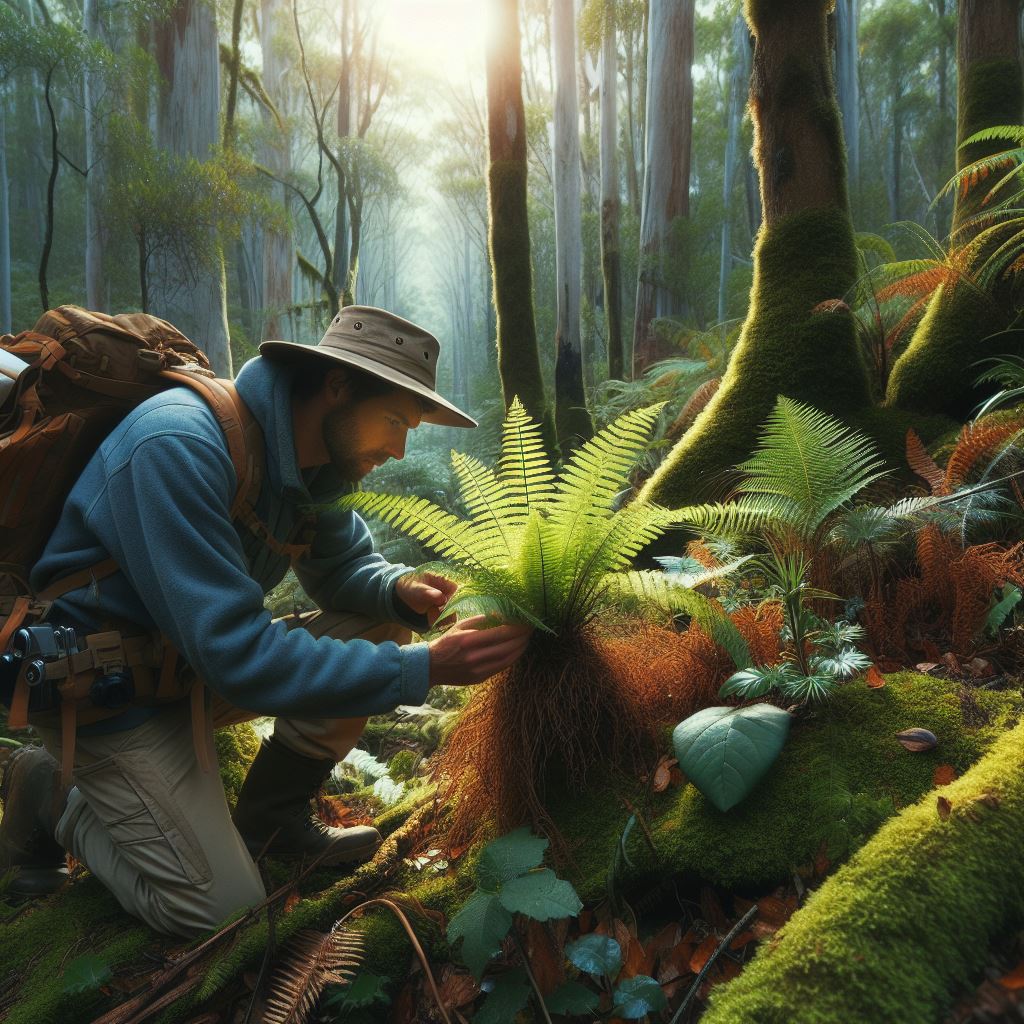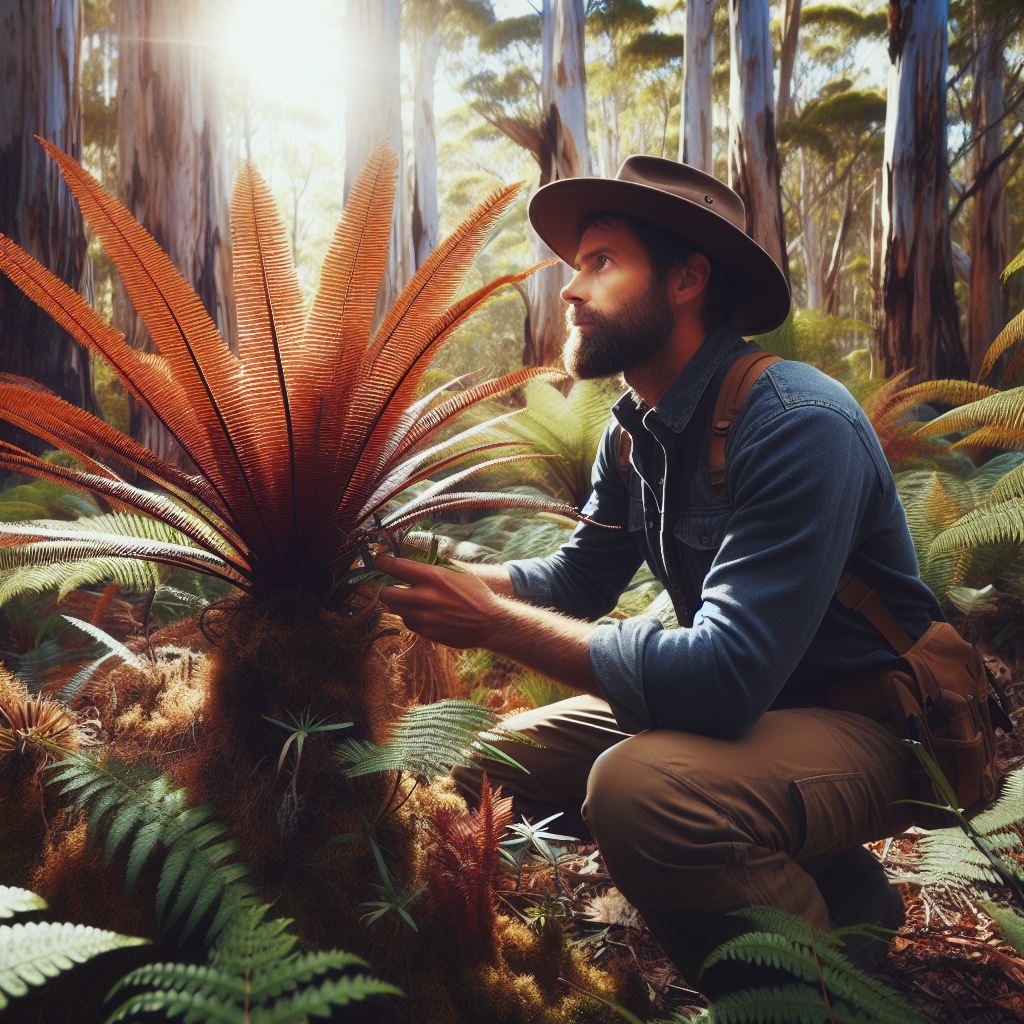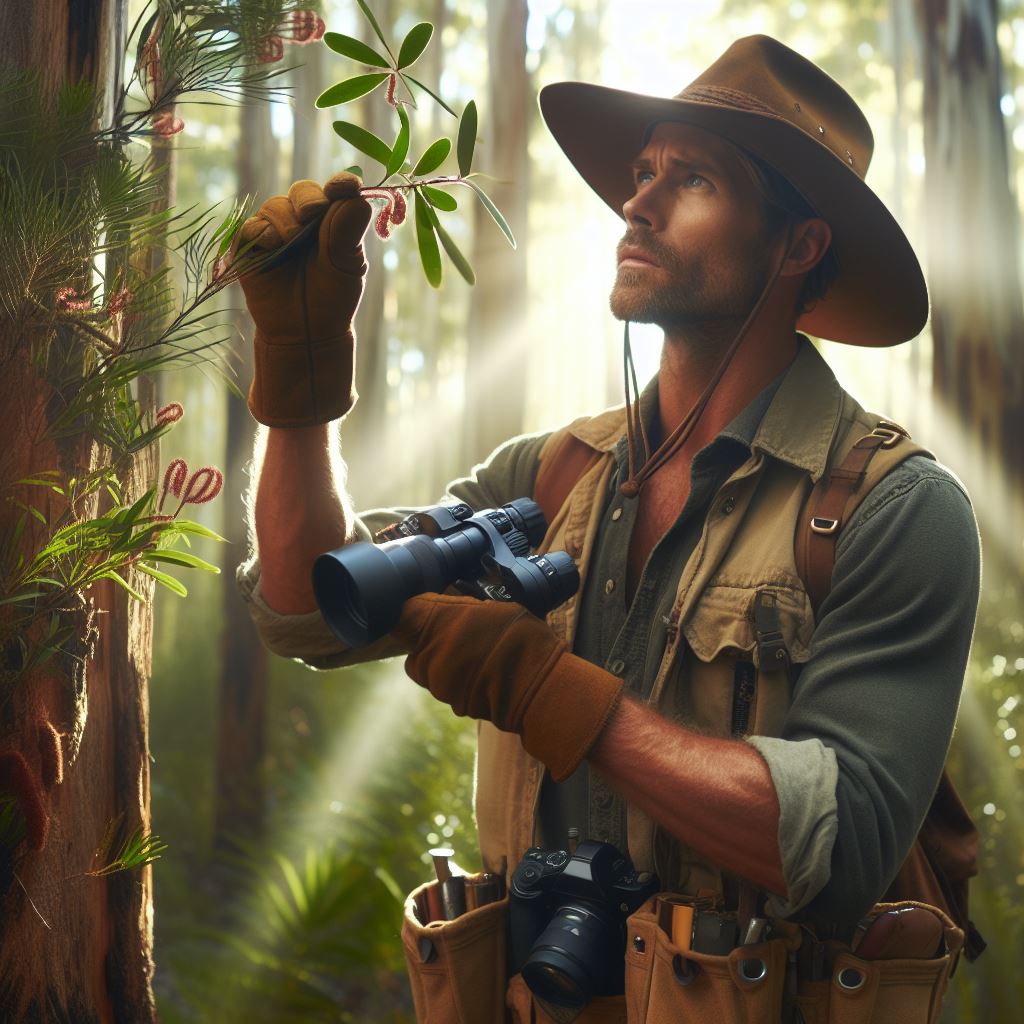Introduction
Join us as we delve into the dynamic life of an Australian forester, exploring their daily routines, challenges, and the profound impact they have on our environment.
Foresters actively manage and conserve forests, playing a pivotal role in safeguarding our natural ecosystems.
Their profession, often shrouded in mystery, will be demystified through this enlightening Q&A session, providing a glimpse into the intricacies of their day-to-day experiences.
Throughout this discussion, we’ll uncover the tireless efforts foresters exert in protecting our delicate ecosystems, mitigating deforestation, and striving to maintain a sustainable equilibrium between human activities and the natural world.
It’s imperative to recognize and appreciate the unwavering dedication and expertise of foresters, as they tirelessly care for our forests, ensuring their preservation for generations to come.
Whether you’re passionate about forestry or simply seeking to expand your knowledge of environmental conservation, this Q&A session promises to offer valuable insights, shedding light on the critical role foresters play in safeguarding our planet’s biodiversity.
Stay tuned to gain a deeper understanding of the multifaceted responsibilities and challenges faced by Australian foresters, and emerge with a newfound appreciation for their invaluable contributions to our ecosystem’s health and longevity.
Read: Future of Agri-Environmental Management in AU
Background Information on Australian Forestry
Provide an overview of the forestry industry in Australia
Australia’s forestry industry plays a significant role in the country’s economy and environmental conservation efforts.
With vast forests covering approximately 126 million hectares, it is one of the largest forested countries globally.
The industry encompasses both native and plantation forests, providing a wide range of products and services.
Australia’s forests are incredibly diverse, comprising various eucalypt species, rainforests, and other unique ecosystems.
These forests are not only home to numerous species of flora and fauna but also serve as essential carbon sinks, helping mitigate climate change impacts.
Due to their vastness and ecological importance, sustainable forest management practices are of paramount importance in Australia.
Forestry in Australia is a multifaceted industry that contributes significantly to the nation’s economy.
It generates employment opportunities, provides raw materials for timber, paper, and pulp industries, and supports regional development.
Additionally, forestry also contributes to renewable energy production, biodiversity conservation, and enhances recreational and tourism activities.
The role and responsibilities of foresters in Australia
Foresters in Australia play a vital role in managing and protecting the country’s forests.
They are responsible for balancing the economic, social, and environmental aspects of forest management.
Their expertise ensures the sustainable use of forest resources while preserving biodiversity and maintaining ecosystem services.
One of the primary responsibilities of foresters is to conduct regular forest assessments and monitoring.
They collect data on tree growth, health, and population dynamics to ensure the long-term viability of the forests.
This information helps in developing sustainable harvesting plans and conservation strategies.
Foresters also implement silvicultural practices, which involve activities like tree planting, thinning, and regeneration techniques.
These practices ensure the continuous growth and regeneration of forests, maintaining their productivity and health.
They also control pest and weed infestations, minimizing their impact on forest ecosystems.
Furthermore, foresters actively participate in forest fire management.
They develop fire prevention and control strategies, as wildfires pose significant risks to both human lives and forest ecosystems.
Through fire risk assessments, fuel management, and planning fire breaks, they aim to mitigate potential fire hazards and protect forest areas.
Collaboration and stakeholder engagement are crucial to the role of foresters.
They work closely with indigenous communities, local industries, and government agencies to ensure effective forest management.
This collaboration facilitates knowledge sharing, promotes sustainable practices, and addresses the diverse needs and interests of stakeholders.
Generally, the forestry industry in Australia is extensive and diverse, encompassing vast native and plantation forests.
Foresters play a pivotal role in sustainably managing and protecting these forests, considering economic, social, and environmental factors.
Through their expertise and responsibilities, foresters contribute to the overall well-being of Australia’s forests and its people.
Read: Biodiversity: Enviro Manager’s Role in AU
Discover More: Australia’s Mining Engineers: Education Pathways
Q&A Session with an Australian Forester
Introduction of the Forester
In this Q&A session, we have the pleasure of interviewing John Smith, a seasoned Australian forester with over 15 years of experience in the field.
John has dedicated his career to preserving and managing Australia’s forests, ensuring their sustainability for future generations.
Questions and Answers Related to Daily Routine
What does a typical day as a forester in Australia look like?
John: A typical day starts early in the morning, as we need to make the most of daylight.
I usually begin by planning and organizing the day’s tasks based on priorities.
What are the main tasks and responsibilities?
John: As a forester, my main tasks involve conducting forest surveys, monitoring tree growth, and managing forest resources.
I also oversee timber harvesting operations and ensure compliance with environmental regulations.
How does the forester interact with the natural environment?
John: Interacting with the natural environment is an integral part of the job.
We conduct ecological surveys to study plant and animal species, assess soil quality, and monitor water resources to maintain a healthy forest ecosystem.
What tools and equipment are commonly used in forestry work?
John: Forestry work requires a range of tools and equipment, including chainsaws, measuring tapes, compasses, portable GPS devices, and mapping software.
We also use drones for aerial surveying and remote sensing technology for data collection.
Are there any specific challenges or risks associated with the job?
John: Yes, there are challenges and risks involved in forestry work.
Working in remote locations with rugged terrain and unpredictable weather conditions poses hazards.
We also need to be cautious of wildlife encounters and potential injuries from using heavy machinery.
How important is teamwork in the forestry industry?
John: Teamwork is crucial in the forestry industry.
We often work in teams to accomplish large-scale projects efficiently.
Good communication and coordination among team members are essential for smooth operations and maintaining safety standards.
Are there any particular skills or qualifications required to become a forester?
John: To become a forester, one typically needs a bachelor’s degree in forestry or a related field.
Strong analytical and problem-solving skills, knowledge of environmental regulations, and physical fitness are important qualities for a successful career in forestry.
What opportunities for career growth and development are available in this field?
John: The forestry industry offers various opportunities for career growth and development.
Foresters can progress to managerial positions or specialize in areas such as forest ecology, timber marketing, or conservation.
Continuous learning and staying updated with industry advancements are key to staying competitive.
Your Personalized Career Strategy
Unlock your potential with tailored career consulting. Get clear, actionable steps designed for your success. Start now!
Get StartedDetailed Responses from the Forester
What does a typical day as a forester in Australia look like?
John: A typical day starts early in the morning, as we need to make the most of daylight.
I usually begin by planning and organizing the day’s tasks based on priorities.
This involves reviewing reports, checking equipment, and coordinating with my team members.
What are the main tasks and responsibilities?
John: As a forester, my main tasks involve conducting forest surveys, monitoring tree growth, and managing forest resources.
I regularly assess the health and density of tree populations, identify invasive species, and implement measures for forest regeneration.
I also oversee timber harvesting operations and ensure compliance with environmental regulations to minimize the impact on the ecosystem.
How does the forester interact with the natural environment?
John: Interacting with the natural environment is an integral part of the job.
We conduct ecological surveys to study plant and animal species, assess soil quality, and monitor water resources to maintain a healthy forest ecosystem.
By understanding the interdependencies within the environment, we can make informed decisions to ensure sustainable forestry practices.
What tools and equipment are commonly used in forestry work?
John: Forestry work requires a range of tools and equipment for different tasks.
Chainsaws are commonly used for felling trees, while measuring tapes and compasses help us collect data on tree diameter and location.
Portable GPS devices and mapping software assist in creating accurate forest maps.
Drones have become valuable tools for aerial surveying, and remote sensing technology allows us to collect data on forest health and biomass.
Are there any specific challenges or risks associated with the job?
John: Yes, there are challenges and risks involved in forestry work.
Working in remote locations with rugged terrain and unpredictable weather conditions poses hazards such as falls or accidents with heavy machinery.
Wildlife encounters, especially with venomous snakes or aggressive animals, are possible.
Additionally, improper handling of equipment or exposure to harmful chemicals can also be risks if safety protocols are not followed diligently.
How important is teamwork in the forestry industry?
John: Teamwork is crucial in the forestry industry as it allows us to accomplish large-scale projects efficiently.
We often work in teams to conduct surveys, carry out tree planting initiatives, or manage firefighting efforts.
Good communication and coordination among team members are essential for smooth operations and maintaining safety standards in challenging work environments.
Are there any particular skills or qualifications required to become a forester?
John: To become a forester, one typically needs a bachelor’s degree in forestry or a related field.
Strong analytical and problem-solving skills are important as we often encounter complex ecological and resource management issues.
Knowledge of environmental regulations and policies is crucial to ensure compliance.
Physical fitness is also necessary as the work can be physically demanding, especially during fieldwork.
What opportunities for career growth and development are available in this field?
John: The forestry industry offers various opportunities for career growth and development.
Foresters can progress to managerial positions, where they oversee larger forest management projects and teams.
Specializing in areas such as forest ecology, timber marketing, or conservation can open doors to advanced roles.
Continuous learning, attending workshops, and staying updated with industry advancements are key to staying competitive in this field.
Read: Soil Health: Top Priority for AU Enviro Experts

See Related Content: Forestry Careers: Demand in Australia
Featured Case Study or Story
Share a real-life example or anecdote highlighting a day in the life of an Australian forester
Imagine waking up to the crisp, fresh air of the Australian wilderness.
As an Australian forester, every day brings new challenges and unique experiences.
Let me share with you a real-life example of a day in the life of James, a dedicated forester.
James starts his day early, just as dawn breaks over the dense eucalyptus forest.
He embarks on his journey through the rugged terrain, armed with his tools and a deep knowledge of the ecosystem.
His goal? Sustainably manage the forest while preserving its natural beauty.
First, James checks on the reforestation projects initiated a few years ago.
He carefully inspects young saplings, ensuring they have enough sunlight and water to thrive.
With each tree he plants, James contributes to the restoration of the forest and its crucial role in providing habitats for various plant and animal species.
Next, James visits a logging site.
While logging is a necessary aspect of his job, it comes with its fair share of challenges.
He ensures that the harvesting is done selectively, targeting only mature trees and implementing measures to minimize environmental impact.
The soft hum of chainsaws echoes through the forest as James supervises the process, striking a balance between economic needs and ecological preservation.
In the afternoon, James meets with a team of scientists and researchers.
One of his unique experiences as a forester is the opportunity to collaborate with experts from various fields.
They discuss the latest findings on forest health, invasive species, and climate change impacts.
It is a constant learning process for James, as he adapts his practices to ensure long-term sustainability in a rapidly changing environment.
Towards the end of the day, James encounters a unique challenge – a wildfire threatening the outskirts of the forest.
He springs into action, coordinating efforts with firefighters and emergency response teams.
His knowledge of firefighting techniques proves invaluable as they battle the blaze tirelessly.
With determination and expertise, James helps protect the forest from further devastation.
Discussing any unique experiences, challenges, or accomplishments mentioned in the case study
James’s story highlights some unique experiences, challenges, and accomplishments faced by Australian foresters.
Their role extends beyond managing timber resources; they are vital stewards of the environment.
One of the significant challenges foresters face is finding a balance between economic development and ecological preservation.
James tackles this challenge by implementing sustainable logging practices and actively engaging in reforestation efforts.
His dedication to preserving the forest’s ecosystem ensures that future generations can enjoy its beauty and benefits.
The collaboration with scientists and researchers is another unique aspect of James’s work.
This interdisciplinary approach allows foresters to stay updated on the latest findings and incorporate them into their management strategies.
It showcases their commitment to continuous learning and adaptability, vital qualities in a world grappling with the effects of climate change.
Moreover, the ability to handle emergencies, such as wildfires, is a commendable accomplishment.
Australian foresters are often at the forefront of wildfire management, combining their knowledge of the forest with firefighting techniques.
By swiftly responding to and containing wildfires, they safeguard not only the forest but also nearby communities and wildlife.
Therefore, a day in the life of an Australian forester is a blend of responsibility, challenges, and accomplishments.
They work tirelessly to ensure sustainable forest management while navigating the complexities of the ever-changing environment.
From reforestation and logging practices to collaboration with experts and emergency response, foresters like James are instrumental in preserving Australia’s magnificent forests for future generations.
Read: Renewable Energy in AU Farms: Enviro Impact
Stand Out with a Resume That Gets Results
Your career is worth more than a generic template. Let us craft a resume and cover letter that showcase your unique strengths and help you secure that dream job.
Get HiredConclusion
The Q&A session with the Australian forester offered a captivating glimpse into their daily routine, unveiling the intricacies and challenges inherent in their noble profession.
Through a candid discussion, we gained valuable insights into the tireless efforts and dedication required to preserve and manage the vast and diverse forests of Australia.
As we explored the forester’s daily routine, it became evident that their work is far from mundane; rather, it is a dynamic and ever-evolving endeavor that demands both physical stamina and intellectual acumen.
From the crack of dawn, when the forester embarks on their journey into the heart of the forest, to the twilight hours when they reflect on the day’s accomplishments, every moment is filled with purpose and significance.
The forester’s day typically begins with a meticulous assessment of the forest’s health and vitality, as they traverse through the towering trees and dense undergrowth, keenly observing for any signs of distress or imbalance.
This initial survey sets the tone for the day ahead, guiding the forester’s priorities and actions as they navigate through the challenges presented by nature’s ever-changing canvas.
Throughout the day, the forester engages in a myriad of tasks, each one contributing to the overarching goal of forest preservation and sustainability.
Whether it be conducting wildlife surveys to monitor biodiversity, implementing controlled burns to manage vegetation growth, or collaborating with community stakeholders to develop conservation strategies, every action is executed with precision and purpose.
However, amidst the hustle and bustle of their daily responsibilities, the forester also grapples with numerous challenges, ranging from climate change-induced disturbances to the encroachment of urbanization on natural habitats.
These obstacles serve as constant reminders of the delicate balance that must be maintained between human progress and environmental preservation.




